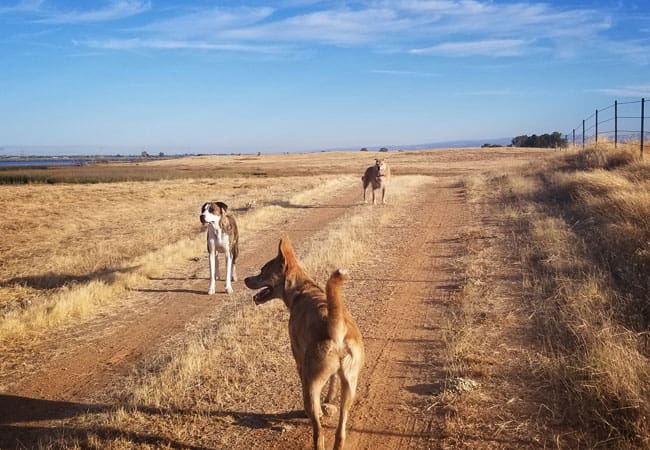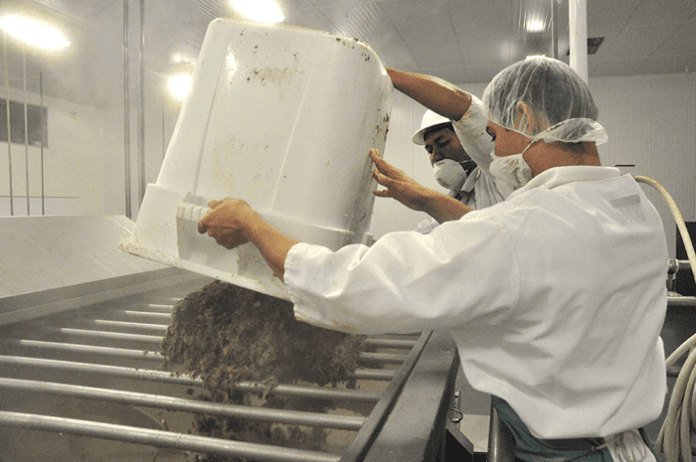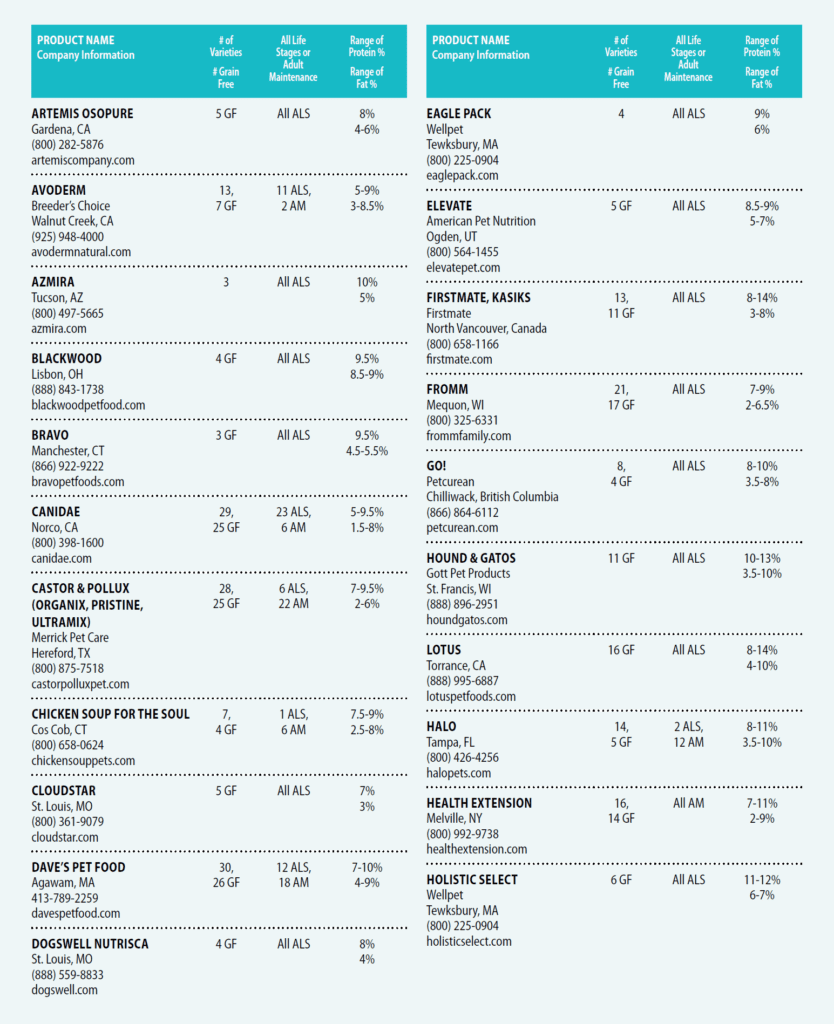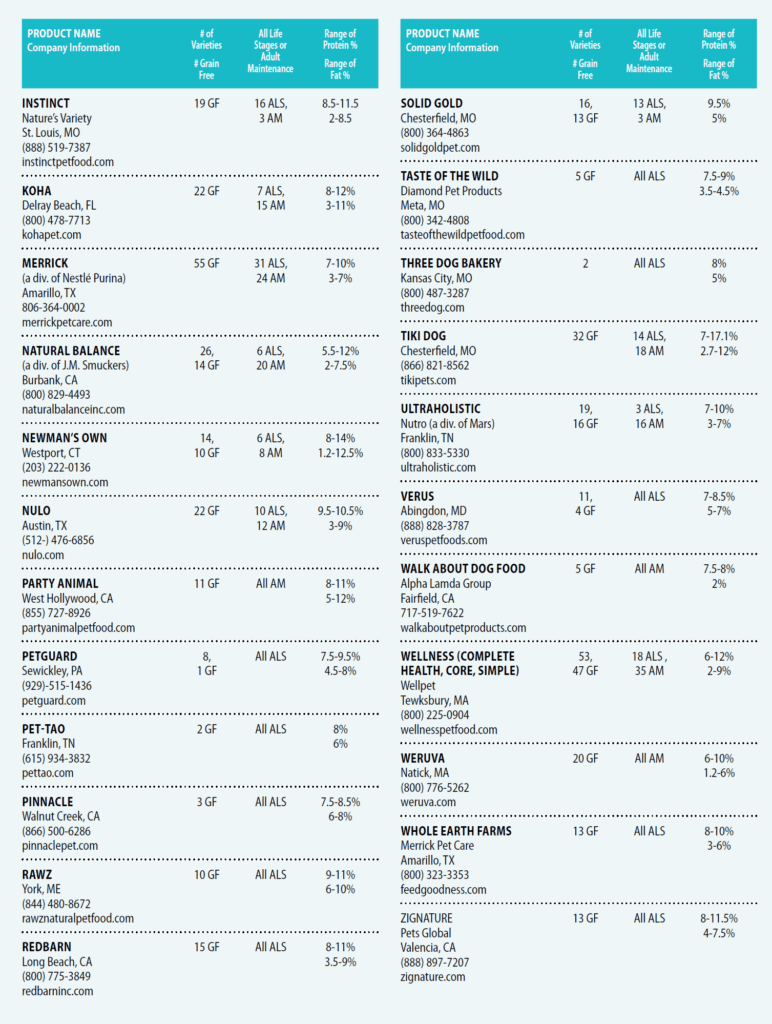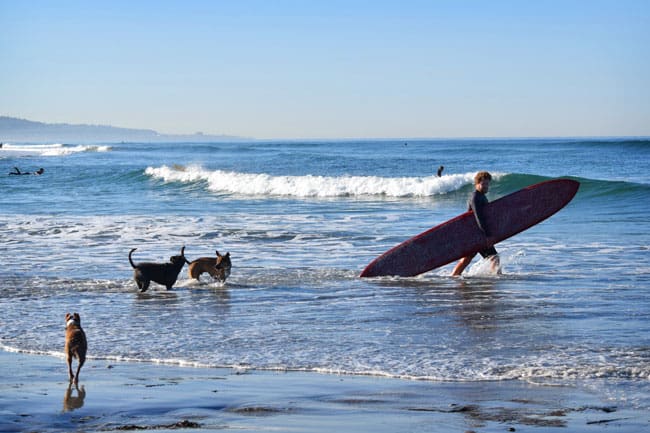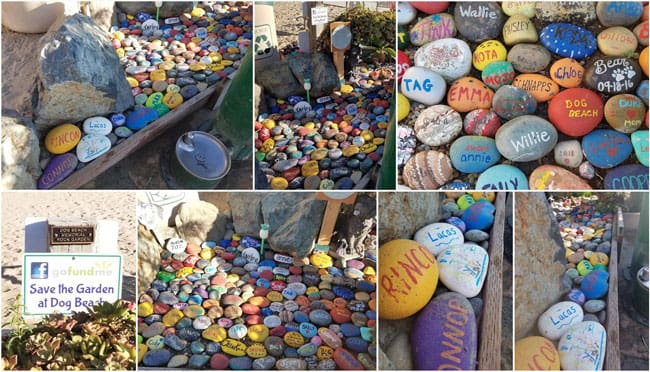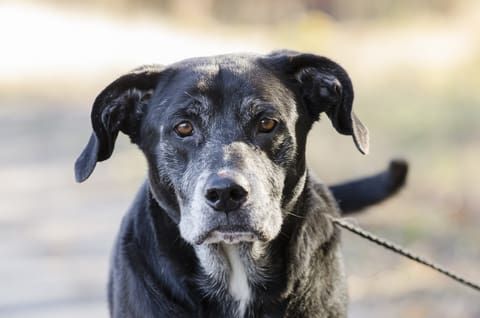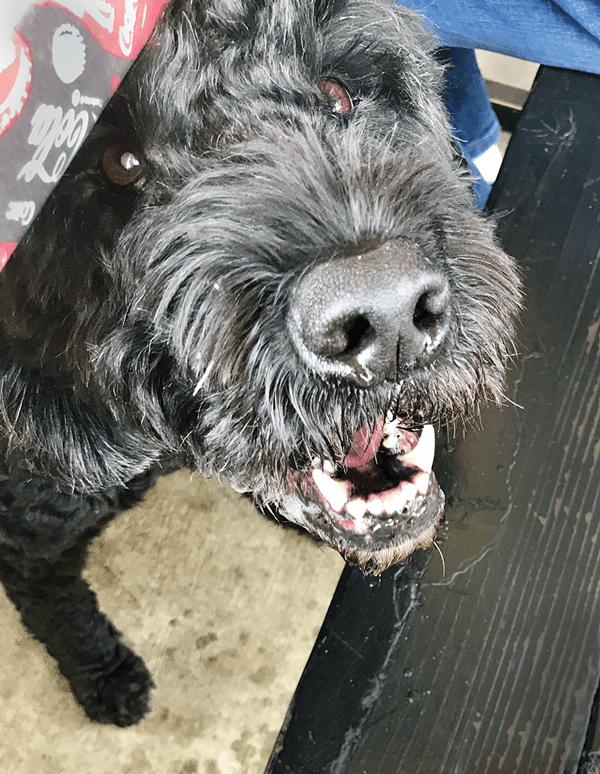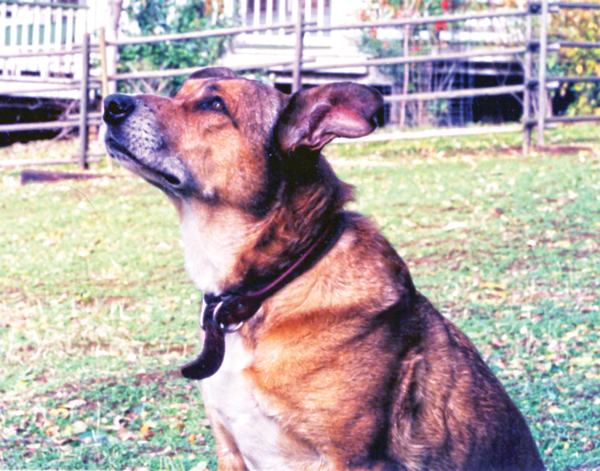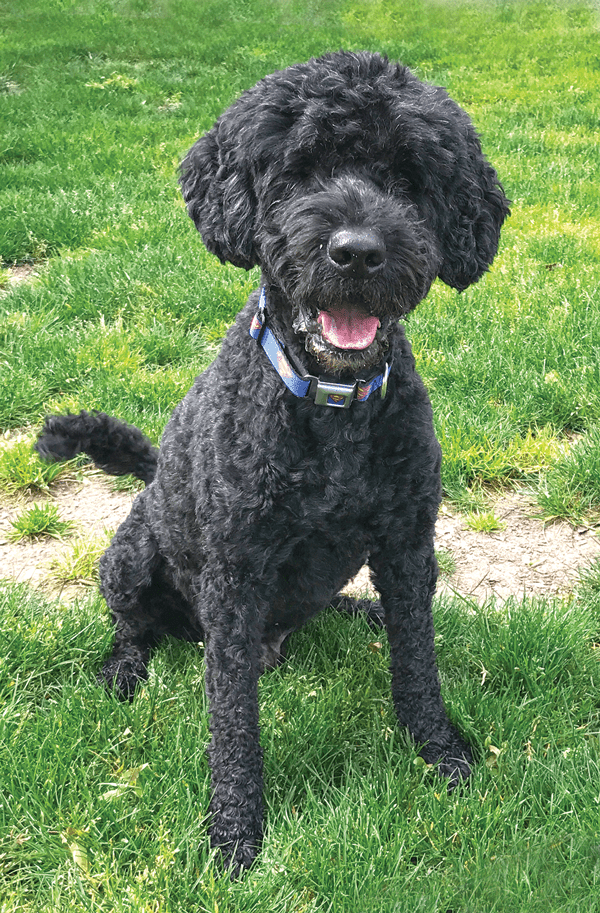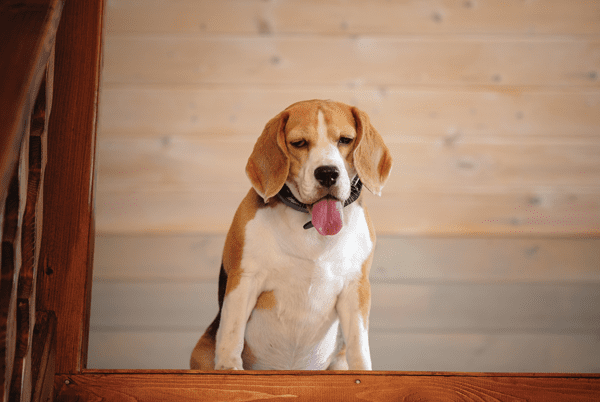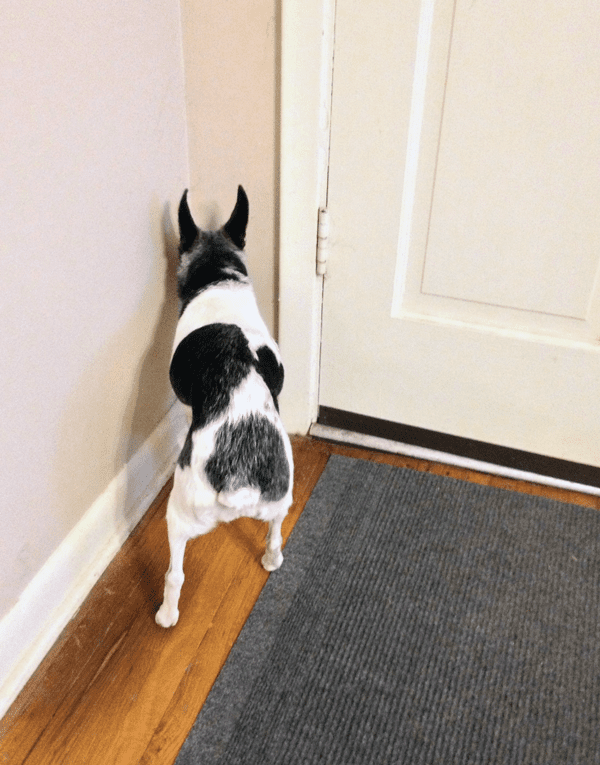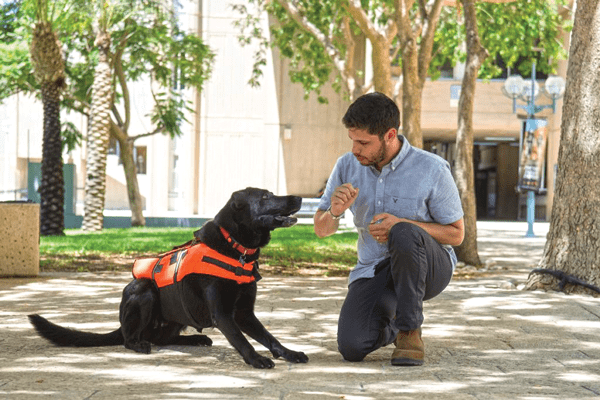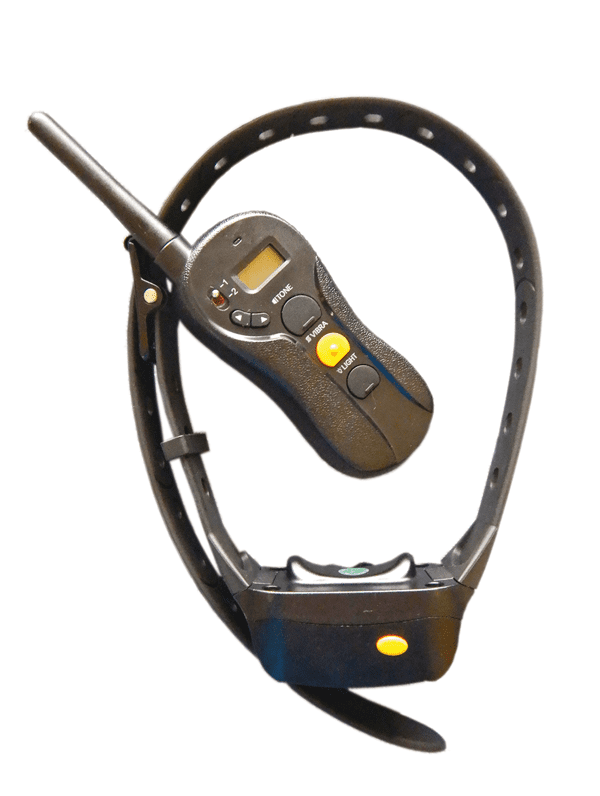While a diagnosis of canine cancer is never good, there are few types worse than hemangiosarcoma (HSA). Like all cancer diagnoses, it’s frightening, shocking, and devastating. Often with this form of cancer there are no warning signs or symptoms; it can hit hard and fast and there may be little time to make decisions, much less research treatment options.
HSA is a highly aggressive cancer of blood vessel cells that develops almost exclusively in canines. While the dermal form can sometimes be successfully treated, the visceral form can suddenly become evident with critical, and often fatal, symptoms.
Jump to: Causes | Symptoms | Diagnosis | Stages of HSA | Treatment
Hemangiomas are benign clusters of blood vessels on or beneath the skin, such as the red birthmarks that occur on infants; sarcomas are rare cancers that develop in the bones and soft tissues, including the blood vessels. Hemangiosarcoma refers to a highly malignant disease that develops in the endothelial cells that line the surface membrane of blood vessels and then invades the blood vessels themselves. Because hemangiosarcoma affects blood vessels, it can develop in almost any organ, with the spleen being the most common anatomic location (40 to 50% of cases).
HSA tumors affecting the atrium and the auricle of the heart were initially thought to be a result of metastasis but are now recognized as primary tumor locations comprising anywhere from 10 to 25% of cases; HSAs are the most common cardiac tumor found in dogs. In dogs with splenic HSA, 25% will also have a heart-based HSA.
The dermal form of the disease comprises about 13 to 15% of the cases. Less common sites include liver, tongue, kidney, bladder, lung, muscle, and bone.
It is estimated that HSA accounts for 5 to 7% of all canine cancers. Any age or breed can develop the disease. It usually occurs in larger breed middle-aged and older dogs (ages 8 to 12 years), though it has been reported in dogs under one year of age. While traditionally there has been no sex predilection, recent reports are starting to show a slight increase in prevalence in males.
Types of Hemangiosarcoma
HSA is classified into three types based on anatomical location: dermal, hypodermal/subcutaneous, and visceral.
Dermal Hemangiosarcoma: The dermal (cutaneous) form of HSA develops on the skin in areas that have minimal or no fur, appearing as black or reddish growths (can be singular or multiple masses) anywhere on the body, with the abdomen, rear legs, and prepuce the most common sites.
In most cases, the cancer does not spread to the dermis tissue and can be treated (and potentially cured) with surgical removal. Because of the malignant nature of the disease, however, it can spread internally, which occurs in about one third of cases; early diagnosis and prompt treatment is vital.
This form of HSA has a predilection for dogs with light or non-pigmented skin, sparse coats, and areas of white fur, and has been linked to excessive exposure to the sun. Thus, dogs with short white fur, such as Dalmatians, are predisposed to developing this type. It is believed that limiting sun exposure in dogs with thin fur and pale skin can help to prevent this form of the disease (there is no known preventive for other types of HSA).
Hypodermal Hemangiosarcoma: The hypodermal (just under the top layer of skin) form of HSA is more aggressive and invasive than the dermal form. This type is characterized by dark red to black growths just under the normal overlying skin; a soft or firm mass may be palpable (due to bleeding), and ulceration is common. Local control is challenging, as the disease may be extensive; more than 60% of these cases spread internally.
Visceral Hemangiosarcoma: Visceral(internal) hemangiosarcoma affects the internal organs, primarily the spleen and heart. It is an invasive and rapidly spreading malignancy, often life-threatening as the tumors can break open and bleed – often without warning.
What Breeds Are at Risk for Hemangiosarcoma?
Large breed dogs appear to be at an increased risk, but especially Box-ers, Bully-type breeds, Dobermans, English Setters, Flat-Coated Retrievers, German Shepherds, Golden Retrievers, Great Danes, Labrador Retrievers, Poodles, Portuguese Water Dogs, Skye Terriers, and Whippets. The dermal form is overrepresented in Basset Hounds, Dalmatians, and Whippets and in dogs middle-aged (4 years) or older.
SIDEBAR: Making the Most Out of the Time You Have
What is the Cause of Hemangiosarcoma in Dogs?
The cause of HSA in dogs is unknown, but the breed association suggests a genetic predisposition. The dermal form is thought to be associated with excess exposure to sunlight as it is generally found in lightly-pigmented and/or thin-coated dogs. It has also been hypothesized that local irradiation may be contributing factor. Exposure to certain chemicals may also contribute to the development of the disease; though HSA in humans is extremely rare, exposure to vinyl chloride has been implicated.
Symptoms of Hemangiosarcoma in Dogs
HSA tends to progress slowly at the beginning, usually without symptoms and without pain. As a result, a dog’s body can tolerate the disease until it reaches a critical stage. Symptoms may appear for only a limited duration and will depend on the type of HSA and the specific location in the body (see above for dermal form).
Internal HSAs – both the hypodermal and visceral forms – may produce any combination of symptoms from general signs of illness such as lethargy, depression, dementia, inappetence, weight loss, constipation/unusual bowel movements, lameness, and decreased stamina, to more acute symptoms of fainting or weakness, lack of coordination, partial paralysis, intermittent collapse, seizures, abdominal swelling, nosebleeds, coughing, and increased panting.
These malignancies are vascular by nature and develop their own blood supply; however, the blood vessels are formed with mutated cells, and they eventually leak blood into surrounding areas. This slow, chronic bleeding in small amounts can cause subtle transient symptoms with the dog recovering as new blood cells are produced. Eventually the tumors will rupture, resulting in a substantial hemorrhage with critical and obvious symptoms commonly involving difficulty breathing, increased heart and respiratory rates, pale mucous membranes, and collapse due to hemorrhagic/hypotensive shock requiring emergency veterinary care.
Hemangiosarcoma Diagnosis
If HSA is suspected, your veterinarian will perform a thorough physical exam, noting in particular any of the symptoms listed above. At times, abdominal tumors can be large enough that they are felt when palpated. A number of tests will likely be performed, such as a complete blood cell count (CBC), serum biochemistry profile, urinalysis, and coagulation profile. In dogs with HSA, abnormalities noted in the blood panel may include anemia, red blood cell fragmentation, low platelet count, and high number of neutrophils (the primary white blood cells that respond to bacterial infection).
The coagulation profile will determine if there are clotting abnormalities suggestive of disseminated intravascular coagulation (DIC), which is present in about half of the dogs with visceral HSA. DIC is characterized by the development of small blood clots that block the blood vessels; this depletes the platelets and clotting compounds needed to control bleeding, which in turn can cause excessive bleeding. Heart arrhythmias are commonly associated with cardiac and splenic HSAs; accordingly, an electrocardiogram may be recommended.
Diagnostic imaging using radiographs or ultrasound are useful methods for locating, identifying, and characterizing masses in the abdominal and cardiac regions as well as providing possible evidence of free fluid or blood. When a mass on the spleen is detected, it may not be possible to determine if the mass is malignant prior to removal.
A fine needle aspirate may be used to take a tissue or fluid biopsy; analysis of samples taken directly from the tumor (or from a surgically removed tumor) provides the most conclusive method for making a diagnosis. This procedure, however, is not without risk: not only does it have the potential to spread malignant cells during the process, it can also trigger bleeding of the fragile tumors.
Imaging can also assess the extent of the malignancy (staging) and determine whether metastasis has occurred. This can be challenging because there may be multiple tumors and/or the primary tumor site may be difficult to determine.
A recent study by Carloni, et al, published in the ACVIM Journal of Veterinary Medicine (“Prevalence, distribution, and clinical characteristics of hemangiosarcoma-associated skeletal muscle metastases in 61 dogs: A whole body computed tomographic study,” Volume 33, Issue 2, March/April 2019, Pages 812-819) found that clinical examination and traditional diagnostic imaging modalities missed the presence of skeletal muscle metastases. The authors recommend whole body computed tomography (CT) scans for accurate assessment and detection of metastasis to lungs, muscle, and other sites.
The visceral form of HSA is very aggressive and grows rapidly with local infiltration occurring early in the course of this disease. The likelihood that it has spread from the primary tumor by the time of diagnosis is very high, with about 80% of cases with metastasis upon initial presentation. The liver and lungs are common sites of metastasis, but the disease can spread to any location in the body due to its connection to the blood vessels.
Because the symptoms associated with HSA can be subtle and non-specific, many cases are not diagnosed until a ruptured tumor results in catastrophic hemorrhage. While dermal HSA tends to have a lower metastatic rate and has the potential to be cured, it is important that a comprehensive assessment also be done in these cases because this form can still metastasize.
Stages of Hemangiosarcoma
Clinical staging is based on the results of the various diagnostic tests performed and can provide a foundation from which to explore and make treatment decisions. Two different three-stage classification systems are traditionally used for HSA.
Visceral HSA
- Stage I: Localized tumor; no other tumors seen in imaging or at time of surgery.
- Stage II: Ruptured tumor confined to the primary site, with or without metastasis present near the site of the primary tumor.
- Stage III: Ruptured primary tumor with invasion into adjacent structures plus local or distant metastasis.
Dermal / Subcutaneous HSA
- Stage I: Primary tumor confined to the dermis.
- Stage II: Primary tumor involving the hypodermis with or without dermal involvement.
- Stage III: Primary tumor with underlying muscular involvement.
Hemangiosarcoma Treatment
Because canine HSA tends to develop undetected until it has reached an advanced stage, the disease is often resistant to most forms of treatment. The modalities of surgery, chemotherapy, and radiotherapy can potentially have some effect.
Surgery
Surgery is typically the primary option for treatment for all cases of HSA.
For the dermal type, it may be the only treatment that is necessary. Sunlight-induced and superficial dermal HSAs are sometimes considered cured following surgery; however, new tumors can develop elsewhere on the body independent of a previous occurrence. It is advised that dogs diagnosed with this form of skin cancer should avoid as much sun exposure as possible. Dermal and subcutaneous HSA surgery sites can be quite extensive due to the necessity of removing all affected tissues.
For visceral forms of the disease, surgery is usually recommended for all locations except those involving the heart. Cardiac surgery is inherently difficult, but vascular tumors are even more challenging. Depending on the size and involvement, atrial tumors may be considered for excision. Because HSA is associated with life-threatening hemorrhage and a dismal prognosis, the difficult decision of whether to pursue emergency surgery must often be made quickly at the time of diagnosis.
For dogs with splenic masses, removal of the spleen (splenectomy) is recommended, even though it may not be known in advance if the tumor is benign or malignant. It is estimated that approximately 50% of splenic tumors are benign, but even if they are non-cancerous, the tumors can be dangerous because the spleen itself is very vascular and can rupture and cause substantial and serious bleeding. Removal of the spleen thus becomes both a diagnostic (by providing tissue for biopsy) and a therapeutic procedure. During the procedure, the entire abdominal cavity will be examined for evidence of metastasis and additional tumors with samples of any suspicious tissue taken for biopsy.
If there is time before the surgery, it can help to have a decision made and plan in place for what you want done, depending upon the findings made during the procedure.
While surgery may be the best option available and provide the highest chance of increasing survival time, there are risks and concerns. Due to the inherent nature of the disease, there is a significant risk for severe hemorrhage during the surgical procedure.
Dogs presenting with emergency HSA may already be compromised; stabilization prior to surgery usually involves fluid therapy and/or blood transfusions and intensive care monitoring. Cardiac arrhythmias can occur post-surgery and, while most occurrences resolve within 24 to 48 hours, some may require treatment.
Removal of the spleen in deep-chested dogs may create more space in the abdominal cavity; as a result the dog may be more prone to gastric torsion and gastropexy (stomach tacking) may be warranted at the time of surgery.
Chemotherapy
Given the propensity for HSA to metastasize, chemotherapy is often recommended as an adjunct treatment to surgery, especially in cases of incomplete surgical removal, or as a primary treatment for heart-based HSAs (as surgery in the cardiac area can be very difficult).
There are several chemotherapy protocols used, consisting of either a single agent or a combination of drugs; doxorubicin (Adriamycin), vincristine, piroxicam, cyclophosphamide, and methotrexate are the most common ones. Doxorubicin appears to reduce the gravity of the disease, yet it doesn’t necessarily extend the survival time beyond that of other protocols.
Metronomic chemotherapy (a constant low dose of chemotherapy given at home in oral form) is being studied as an approach that not only reduces the chances of side effects but helps control the spread of disease and thereby increase survival time. Since HSA is not curable, the intention of chemotherapy treatment is to slow the cancer progression while providing a good quality of life.
Radiotherapy
Radiotherapy (RT) has limited use in treatment of HSA because of where the disease forms in the body (sites tend not to be conducive to receiving radiotherapy) and the extremely high rate of metastasis. It may be considered as a treatment option for dermal forms where surgical removal from external surfaces did not achieve clear margins, as an adjunct to chemotherapy, and for cases with localized Stage II or Stage III disease.
As a palliative therapy, RT can be beneficial in reducing pain and possibly extending survival time. Exploration of radiotherapy as a treatment option is continuing, however, and some recent – albeit small – studies have demonstrated that RT can provide clinical benefits to dogs with HSA.
SIDEBAR: You can’t help it: Reconsidering past decisions after a devastating diagnosis
COMPLEMENTARY REGIMENS
I’m-Yunity and Yunnan Baiyao are two alternative therapeutics that have been documented as having some success in treating HSA. While the research may be limited and in the early stages (studies are continuing), veterinary oncologists are incorporating these modalities into their treatment protocols.
I’m-Yunit. This is a poly-saccharopeptide (PSP) compound from the Coriolus versicolor mushroom, commonly known as the Yunzhi or turkey tail mushroom. It has been used for over two millennia in traditional Chinese medicine; Western researchers have recently begun exploring this mushroom treatment for hemangiosarcoma. It has been demonstrated to have antitumor activity in tissue culture studies and can boost the body’s own cancer-fighting abilities by improving the function of the immune system.
In 2012, a small (15 dogs) clinical trial at the University of Pennsylvania demonstrated the efficacy of I’m-Yunity mushroom supplements in dogs with cancer. This double-blind randomized multidose pilot study featured a high-dose of PSP, which significantly delayed the progression of metastasis and increased the reported survival times for canine hemangiosarcoma.
The data suggest that PSP, as a single agent, might offer significant improvements in morbidity and mortality. For more information, see “Single Agent Polysaccharopeptide Delays Metastases and Improves Survival in Naturally Occurring Hemangiosarcoma,” in Evidence-Based Complementary and Alternative Medicine, Volume 2012.
Yunnan Baiyao. Yunnan Baiyao is also a Chinese herbal medicine and is known for its hemostatic (stops bleeding) and wound-healing properties. It is a protected Chinese traditional medicine and the exact formula is a trade secret, but labelling does identify its primary components.
Yunnan Baiyao is frequently used in veterinary medicine to control bleeding in dogs by improving clotting and platelet function and veterinary oncologists are prescribing it to control or stop bleeding from cancerous vessels.
In laboratory experiments, Yunnan Baiyao has been shown to kill HSA cells. Yunnan Baiyao appears to be of benefit to dogs with HSA, but documentation on efficacy and side effects is not yet available; clinical trials are still being conducted.
SIDEBAR: On the Horizon: Hemangiosarcoma Studies
Prognosis
HSA is a formidable disease, especially when compared to most other canine cancers. As with any form of cancer, statistics are presented as general guidelines and do not represent how an individual dog will respond to treatment.
The long-term prognosis for dogs with HSA is dismal, even when the disease is discovered at its early stages. For dogs who are receiving treatment, however, their quality of life usually remains good to excellent. Even as the disease progresses, it does not appear to cause much pain; instead, dogs may experience a return or increase of symptoms such as bleeding, anemia, or weakness.
Overall, 6 to 13% of dogs with HSA who are treated with surgery alone will be alive one year post diagnosis; of those treated with surgery and chemotherapy, the one-year survival rate increases to 12 to 20%.
- Survival time for dogs with dermal HSA that cannot be cured through treatment varies greatly and is dependent on such factors as location and stage. In cases where the dermal lesions invade the sub-cutaneous tissues, the survival times fall in the range of five to 10 months.
- The average survival time for dogs with hypodermal HSA is six months.
- Without treatment, most dogs diagnosed with HSA of the internal organs will die within one to two weeks of diagnosis, although some can survive for several months and others only a day.
- The prognosis for patients with splenic HSA treated with only surgery ranges from one to three months, while those treated with surgery and chemotherapy have an improved prognosis range of four to eight months. However, if extensive metastasis is present at the time of surgery, survival time is only about two months when followed with chemotherapy.
- Clinical stage tends to be strongly associated with the prognosis for dogs with splenic hemangiosarcoma.
- The prognosis declines for dogs with splenic tumors that rupture; survival time tends to be shorter and unpredictable.
- Dogs with evident metastasis at diagnosis and who do not undergo surgery may respond to chemotherapy, which can provide a prolonged quality of life when compared with dogs who are not treated at all.
- The prognosis for dogs with tumors that involve the heart, liver, and/or other internal organs is worse than for those with splenic tumors.
- Dogs with Disseminated Intravascular Coagulation (DIC) appear to have shorter survival times than dogs without the condition.
- Unfortunately, almost all dogs with HSA will succumb to the disease from tumor rupture or metastasis to the organs.
Reason for Hope
HSA affects thousands of dogs every year, but investigation into it has been limited, primarily because it is almost exclusively a canine disease. Most other types of canine cancers occur in humans as well and consequently have a greater impetus for research.
It has been more than 40 years since chemotherapy was added to the standard of care for the treatment of HSA. While there has been little improvement in the prognosis for dogs since then, recent studies show promise for the development of new screening methods and early detection, which will allow for treatment to begin sooner and, we hope, a better outcome. See “On the Horizon: Hemangiosarcoma Studies” on the next page for more information about the latest research on this devastating disease.
